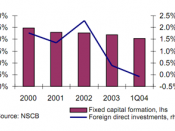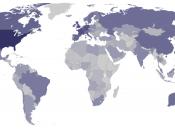Table of contents
1) FDI from a historical perspective
I. Who have been the ones giving/receiving the most FDI in the past?
II. Historical shifts in FDI patterns and why?
2) Current FDI flows worldwide.
I. Current major investors/receivers of FDI and why?
II. Developed nation FDI flows (high and low ends).
III. Developing nation FDI flows (high and low ends).
3) Future projections for FDI flow.
I. Projected FDI flow in the future and why?
II. Shifts in patterns of FDI flow worldwide and why?
III. The consequences of FDI for the investing and recipient countries and the impact on these countries of the shifts in flows over time.
FDI from a historical perspective
I. Who have been the ones giving/receiving the most FDI in the past?
FDI flow has been primarily focused on developed nations. These nations get the majority of the flow of FDI. Developed nations dominate giving FDI as well as receiving.
An obvious reason for this is that the more financially established a country is, the more likely it'll have money to invest abroad. The United States has been the biggest giver and receiver of FDI worldwide for the last several decades (also see exhibit 7). Developed nations get approximately 80% of worldwide FDI. There is a strong positive relationship between inflows and outflows of FDI among developed nations.
II. Historical shifts in FDI and why?
There have been numerous shifts in FDI throughout the 20th century. Causes of this vary by situation and time. Before FDI became such a dominant force in globalization, it was trade that was the dominant factor. "The primary mechanism of integration has shifted from trade to FDI. Of course, these trends in the growth of FDI, trade and production are not independent of one another.



Thank you
This is really well written. I used this information to sound better in my micro economics class.
2 out of 2 people found this comment useful.